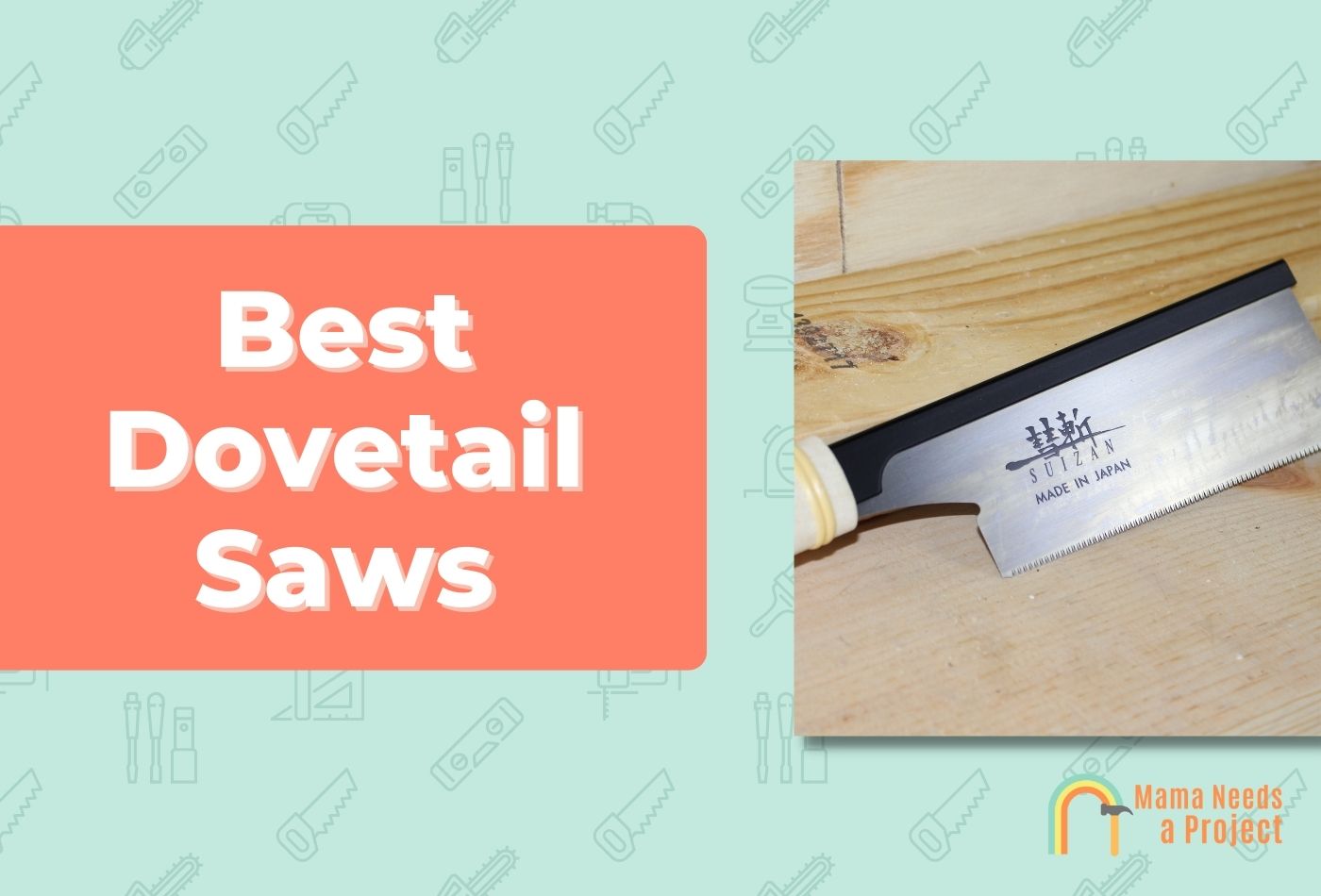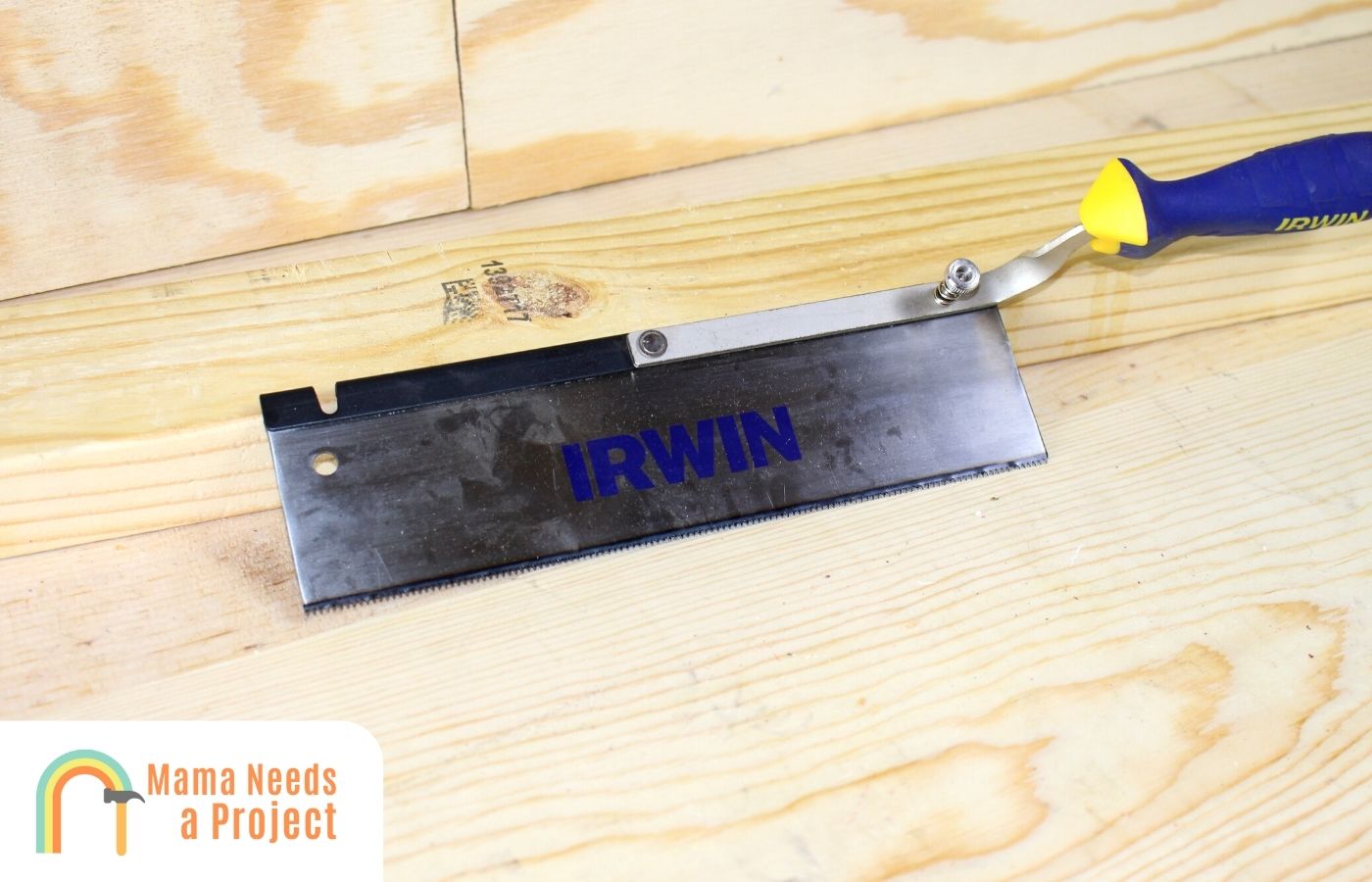I Tested 5 Dovetail Saws: These are the Best (2024)
If you’re looking for a new dovetail saw, there’s certainly no shortage of options.
These Japanese saws are specifically made for cutting dovetails, but they can also be used for other cuts – making them one of the more versatile hand saws you can buy.
So, which is best?
In this post, I’ll compare some of the best dovetail saws on the market so you can find the one that best suits your needs. Let’s dig in!
In a hurry? The best dovetail saw is the SUIZAN 6″ Dovetail Saw, as it’s reliable, efficient, easy-to-use, and as authentic as a Japanese dovetail saw can be. Plus it’s more affordable than comparable products.
Quick Answer: Here are My Favorite Dovetail Saws 👇
Best Dovetail Saw
- #1 Best Overall – SUIZAN 6″ Dovetail Saw
- Best Quality – Irwin 10″ Dovetail Saw
- Best Value – KERYE 9.5″ Dovetail Saw
- Best Double-Sided Blade – RUITOOL 10″ Japanese Dovetail Saw
- Easiest To Use – Irwin 7 1/4″ Dovetail Saw
1. SUIZAN 6″ Dovetail Saw – #1 Best Overall
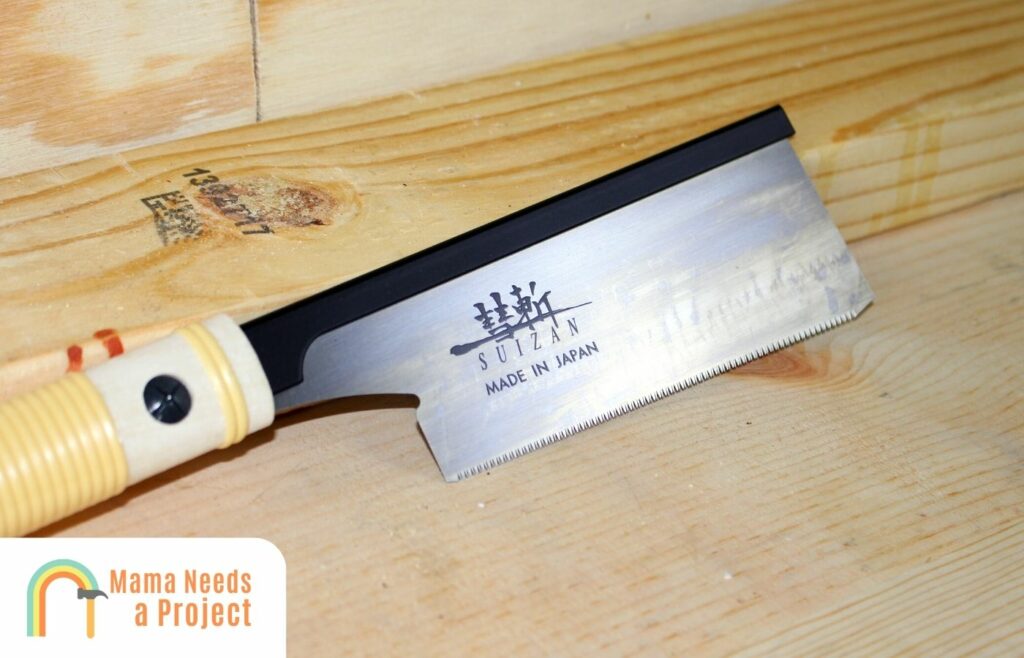
- JAPANESE STYLE PULL SAW: This product is a “Pull Saw.” Most people are used to European saws, called…
- JAPANESE STEEL: All SUIZAN Japanese saws consist of top quality Japanese steel. The high-quality steel makes…
- MADE IN JAPAN: All SUIZAN products are manufactured in Japan by Japanese master craftsmen. The whole process…
The SUIZAN 6″ Dovetail Saw, an authentic, pull-style Japanese saw that’s expertly crafted to be durable, effective, and easy to use making it my overall best choice.
Made by Japanese master craftsman, this hand-powered saw employs a 6” (150mm) blade that’s 100% highest-quality Japanese steal.
The blade is 0.012” (0.3mm) thick, its kerf width is 0.02” (0.5mm), and it has 25 teeth per inch. Its overall length (handle included) is 15.2” (38.5cm).
As its name indicates, this is a two-part saw, meaning the blade can be detached from the handle which can be helpful for storage.
The handle is made of softwood and it’s wrapped with bamboo strips making it comfortable to use without causing fatigue.
What I Liked:
- 25 teeth per inch means this saw is great at making clean, precise cuts quickly.
- Durability of the blade ensures it can cut through hardwoods and softwoods effortlessly.
- Bamboo grip prevents hand & wrist discomfort while cutting.
- Blade is 100% secure once fastened to ensure cutting accuracy.
What I Didn’t Like:
- Bamboo can loosen and reduce grip quality.
- You can’t take off a lot of material quickly since it’s not a coarse blade.
My Thoughts
Overall, the SUIZAN 6″ Dovetail Saw is the best dovetail saw you can buy. It’s made in Japan by expert Japanese craftsmen using locally sourced materials, so it’s an authentic product you can’t find elsewhere. It’s durable, efficient, and easy to operate. In short, it’s got all the qualities of a professional-grade saw, yet even amateurs can use it with a little practice. Sure, the bamboo grip can loosen over time and it’s one the pricier side, but it’s an extremely high quality saw that will last for years. All things considered, this is a terrific saw in every meaningful respect, which is why it’s top dog on my list.
More Stores
2. Irwin 10″ Dovetail Saw – Best Quality
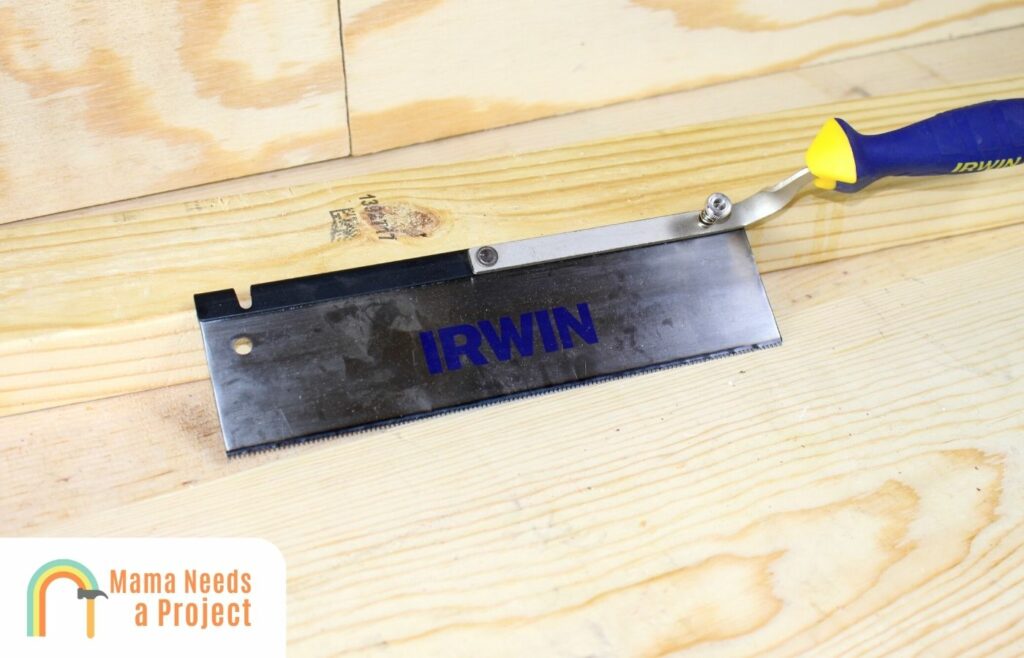
- This dovetail saw uses a spring-loaded, reversible blade that can be used for left- or right-cutting
- The ProTouch handle on each jamb saw provides ergonomic comfort
- A Wide-Body Flush-Cut blade on this dovetail saw measures 50 mm
If achieving substantial yet precise cuts in a range of materials is your top priority, I highly recommend the Irwin 10″ Dovetail Saw.
With its spring-loaded, reversible blade, this saw can cut to the left and to the right which can be convenient for some cuts.
Its 2-inches-thick, 10-inch-long blade is made of high-speed steel, and there are 14 teeth per inch.
It employs an ergonomic ProTouch handle that’s made of plastic and rubber, and it only weighs a few ounces.
This saw is also very comfortable and a more versatile saw for woodworking projects of any kind.
What I Liked:
- It’s easy to maneuver since it’s lightweight, thin, and equipped with an ergonomic handle.
- With just 14 teeth per inch it can cut accurately and remove a lot of material quickly.
- A reversible blade ensures you won’t need different blades for different cutting directions.
- It employs professional-grade materials yet it’s affordable enough for DIYers and hobbyists.
What I Didn’t Like:
- Spring-loaded blade mounting system can wear down and reduce blade security.
- Has a hard time achieving clean cuts since there are only 14 teeth per inch.
- More expensive than other saws.
My Thoughts
It’s clear the Irwin 10″ Dovetail Saw was designed with quality in mind, yet its price leads many to think it’s a run-of-the-mill dovetail saw. It’s well-constructed and therefore easy to use, and its blade can cut through hardwoods and softwoods while resisting wear exceptionally well. And its handle ensures you can cut continuously without feeling discomfort. If it delivered slightly cleaner cuts and used a better blade mounting system, it’d be at the top of the list, as it’s fantastic in all the areas that matter. When you pick up this saw, you can feel the quality through its weight. You can put a decent amount of downward pressure on this saw without any problems making it easy to cut out dovetail joints. Overall, you won’t regret this saw and I would highly recommend it.
Other Stores
3. KERYE 9.5″ Dovetail Saw – Best Value
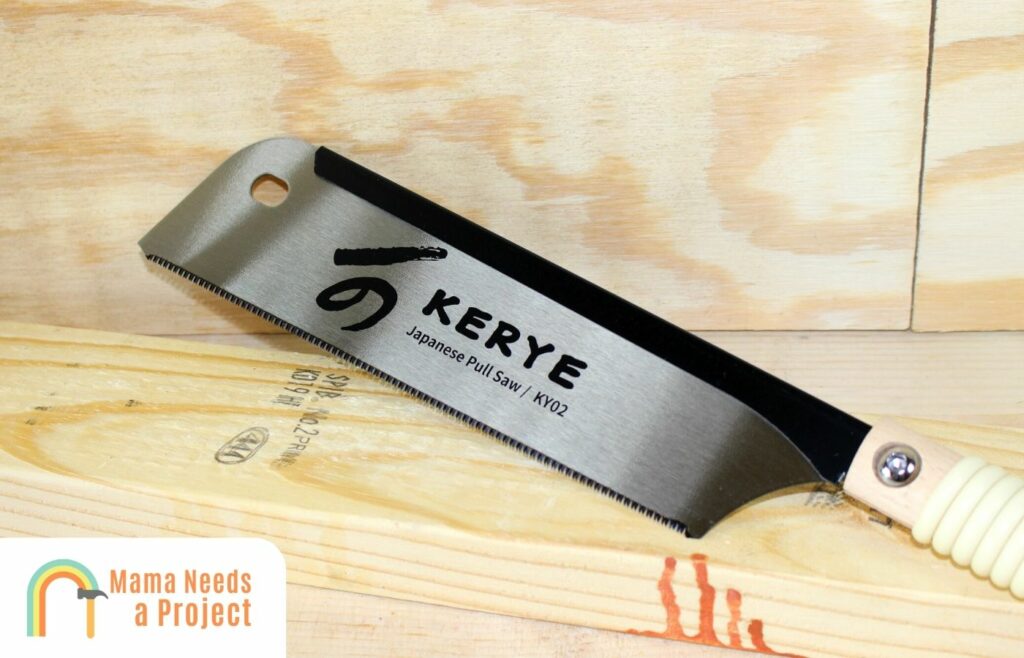
- 【Superiorities】Compared with typical Japanese dovetail saw, KY02 is thicker to 0.024 inch and longer to…
- 【Parameters】 This saw has a total length of 24 IN ( blade length: 9.5 IN ), weight of 0.6 lb ( handle…
- 【Material】KY02 ryoba flush cut saw is made from SK5 high standard metal, light to 0.3lb beech handle as…
If you’re searching for a good dovetail saw without paying a fortune, the KERYE 9.5″ Dovetail Saw is ideal for any woodworker.
It’s 9.5-inch blade is made of Sk5 Japanese high-carbon steel, and it’s 0.0024” thick. While it’s not quite as good of quality as the SUIZAN saw above, it’s still a great saw for cutting any dovetail joint.
The handle is wrapped with smooth rattan, and it’s pull-operated (as opposed to push-operated).
The blade is thicker, harder, and more portable than other KERYE dovetail saw blades, which is convenient.
Additionally, the blade is forged using a special technique to ensure durability, and its teeth are quenched-burned to ensure sharpness.
What I Liked:
- Ergonomic handle ensures you can cut continuously without experiencing discomfort.
- Blade strength ensures this saw can cut through even dense hardwoods without dulling.
- Price makes it accessible to hobbyists and professionals alike.
- Since the blade is easy to change out you can spend more time cutting.
What I Didn’t Like:
- Rattan isn’t as strong as bamboo so expect this wrap to wear down eventually.
- With just 17 teeth the blade is on the coarser side.
My Thoughts
Despite being a low-cost dovetail saw, the KERYE 9.5″ Dovetail Saw is anything but low-quality. Its blade is engineered to be highly resistant to wear, and its ergonomic handle ensures comfort during operation. And since it’s easy to use, it’s accessible to both hobbyists and DIYers. Its weight is just right and helps with achieving accurate cuts. More teeth so it could deliver cleaner cuts would be nice, but overall its cutting quality is excellent and its usability is second to none. If you’re on a budget, I highly recommend this saw.
More Stores
4. RUITOOL 10″ Japanese Dovetail Saw – Best Double-Sided Blade
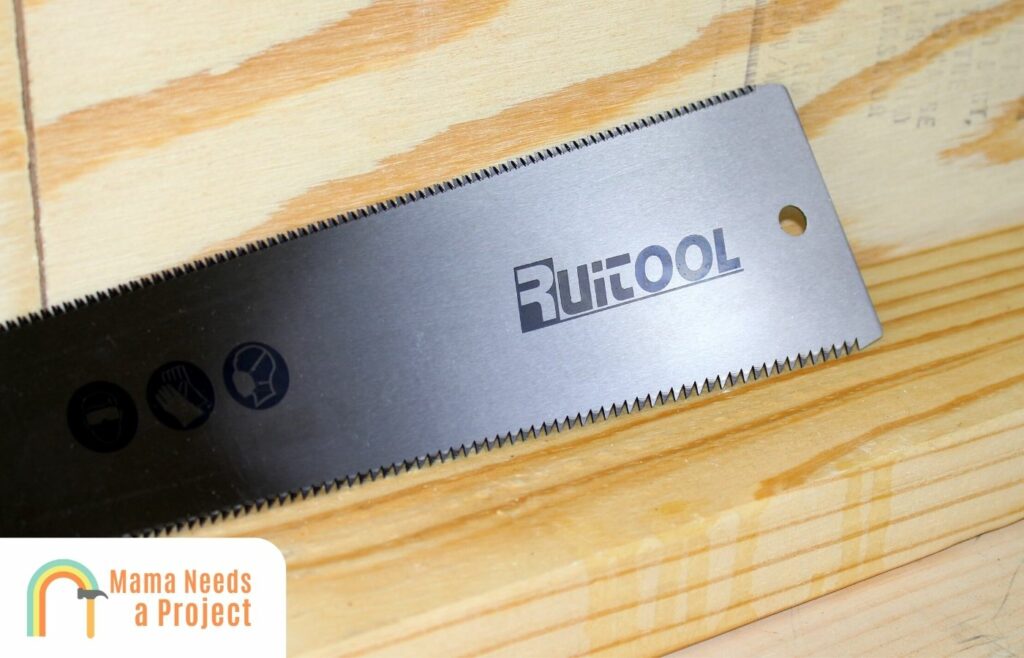
- 【Durable & Flexible Blade】Pull saw blade is made of flexible SK-5 steel,hardened edges, high elasticity,…
- 【Double Edged Tooth】One side coarse teeth gradually changed 6-10 TPI, the other side is 18 TPI,fine…
- 【Faster & Save Effort Design】 Pull saw is 10 inch long blade with triple-beveled teeth and a 12 inch…
With its double-sided, durable blade, easy-to-grip handle, and minimal weight, the RUITOOL 10″ Japanese Dovetail Saw is a versatile, efficient tool that’s ideal for individuals who’ll be pull-cutting regularly.
To be specific, one side has 6-10 teeth per inch, while the other has 18 teeth per inch.
The blade is 10” long, 1/50” thick, made of SK5 Japanese high-carbon steel, and equipped with triple-beveled, ultra-sharp teeth.
The grip is 12 inches long, meaning this saw’s total length is about 22”, just shy of 2 feet – which is definitely on the larger side.
It can be operated with one hand or two, and it’s designed to be accessible to both beginners and experts.
You can also easily replace the blade with the simple screw holding it in place.

What I Liked:
- Blade has thick and fine teeth to ensure more cutting capacity.
- It’s long, strong blade can remove a lot of material in one stroke.
- Blade flexibility helps the user make precise cuts.
- Non-slip grip improves cutting accuracy.
What I Didn’t Like:
- Blade locking mechanism becomes less secure after dozens of blade switches.
- Length prevents this saw from being useful for smaller workpieces.
My Thoughts
In terms of versatility, the RUITOOL 10″ Japanese Dovetail Saw has every other dovetail saw on this list beat, since it’s equipped with a double-sided blade that can make both rough and clean cuts. Its blade is engineered to be ultra-tough, which explains why it can effortlessly cut through both softwoods and hardwoods. Plus its handle is designed for continuous cutting. The only downside is its blade locking mechanism wears down after dozens of changes, but this is minor critique of an overall terrific dovetail saw.
More Stores
5. Irwin 7 1/4″ Dovetail Saw – Easiest to Use
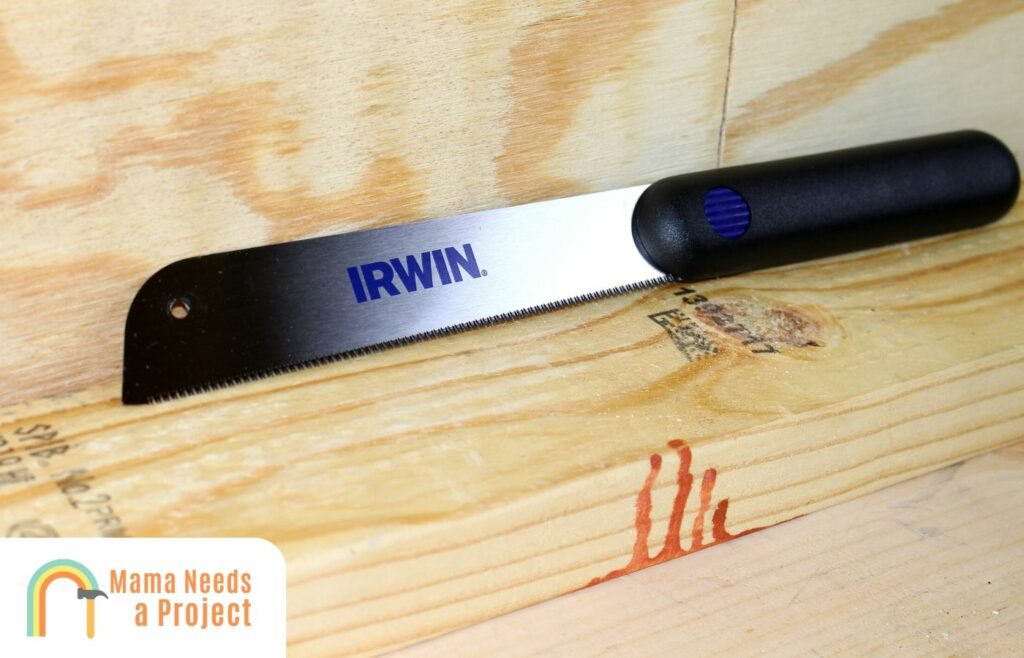
- Flexible micro-thin blade
- Use this dovetail saw for interior trim work and detailed work around windows
- The flexible blade on this pull saw is also great for flush cuts on dowels
The Irwin 7 1/4″ Dovetail Saw is a simple, easy-to-use dovetail saw that’s both low-cost and highly transportable.
Its blade is made of high-speed steel and its handle is made of rubber-plastic.
The blade has 22 teeth per inch and it’s just 7-1/4” in length.
What I Liked:
- It’s incredibly easy to use since it’s compact and the blade has decent flexibility.
- It has many fine teeth per inch so it’s capable of delivering clean, precise cuts.
- The handle is easy-to-grip so you can cut non-stop for at least a couple minutes.
- Blade change is simple so you can spend more time cutting and less time securing.
What I Didn’t Like:
- Overall size limits what it can do with larger workpieces.
- If the handle snaps, cracks, etc. then the whole saw then you’ll need a new one.
My Thoughts
For a simple saw that’s probably underestimated all the time, the Irwin 7 1/4″ Dovetail Saw is an effective, easy-to-use cutting tool that’s perfect for professionals and amateurs. Its blade is strong yet very flexible, and it’s neither too big nor too small (lengthwise). There are many fine teeth per inch, and this—combined with how the teeth are arranged—ensures the saw is capable of delivering clean, extremely accurate cuts consistently. If it could tackle larger workpieces, it’d be at the top of this list, since it’s excellent overall. When compared to other saws on my list, this one definitely has the most flexible blade that might not work for hardwoods – which is something to keep in mind.
Other Stores
What to Consider When Purchasing a Dovetail Saw
Blade Strength
Blade strength is one of the most important factors you should consider when browsing dovetail saws.
If the blade isn’t strong, it’ll dull quickly, even if you only use the saw to cut softwoods. And don’t even think about using a weaker blade with hardwoods—you’ll cut for a minute or so before realizing it’s futile.
The best dovetail saws are made of high-carbon steel, since this metal resists wear and tear well. But just because a blade is strong doesn’t mean it can’t be flexible.
In fact, most high-end dovetail saws feature blades that are tough and flexible; this combination ensures superior cutting quality.
Blade Thickness
Blade thickness is, of course, an important aspect. If it’s a thin blade, it’s going to deliver a thin kerf.
Plus, blade thickness in part determines how good the back saw will be at cutting wood.
Blade Size
The size of a dovetail saw blade in large part determines its cutting capacity.
All dovetail saws have a thin blade, but some are larger (widthwise) than others.
The larger blades are great for cutting through bigger workpieces, but they struggle when cutting smaller pieces.
Skilled woodworkers usually opt for smaller dovetail saw blades because they’re best for fine woodworking.
Tooth Count
How many teeth a dovetail saw has is important as well for a variety of reasons.
A saw with 20 or more teeth per inch can make cleaner cuts than a saw with less teeth per inch.
And whereas most dovetail saw blades have crosscut teeth, some have rip teeth; the rip tooth configuration is good for removing a lot of material quickly.
New dovetail saws come with extremely sharp teeth, of course, but over time these can wear down; you’ll know the teeth need some sharpening when you can no longer cut smoothly.
Blade Change
Since a dovetail saw is comprised of two components—the blade and the handle—you’ll need replacement blades eventually.
But just having replacement blades isn’t enough; the saw needs reliable, easy-to-operate blade housing as well.
If your saw has good blade housing, you should be able to swap out blades quickly and effortlessly.
Most dovetail saw blades snap into place, and to release you just need to press a button. But some will use screws and bolts to lock in place.
If the blade housing keeps the blade firmly in place, achieving precise, clean cuts will be a lot easier.
Handle
A dovetail saw’s handle is important for several reasons.
For one, if the handle is easy-to-grip, you’ll be able to cut more accurately.
Also, if the handle ergonomic, you’ll be able to cut continuously for several minutes without experiencing discomfort.
I believe the best handles are ridged and made of rubber; each finger gets its own groove and the handle fits comfortably in the palm.
A lot of high-end models use a wooden handle, but I don’t like these because they’re often too smooth. Sure, they’re firm, but if your hand gets sweating from cutting it’s very easy to lose your grip.
Plastic handles are fine, so long as they’re ergonomic and sturdy.
Price
At the low end, dovetail saws can be $10-$15. Mid-range dovetail saws are $20-$25, while the high-end, authentic Japanese models are $30-$50.
When considering price, you must think about durability as well, since the more durable a dovetail saw is, the longer it’ll last and therefore more cost-effective it’ll be.
And don’t think that just because a dovetail saw is expensive means it’s inherently superior.
As the SUIZAN 6″ Dovetail Saw, Irwin 10″ Dovetail Saw, and KERYE 9.5″ Dovetail Saw all demonstrate, a top-tier dovetail saw can be affordable.
The reason why authentic Japanese models fetch higher prices is because they’re made with highest-quality steel and often have wooden handles. Plus they have that much sough-after “Made In Japan” tag.
Warranty
An inexpensive dovetail saw, i.e. those less than $20, don’t usually come with a warranty, but a money-back guarantee of some kind may be extended with the purchase.
On the other hand, if you get an authentic, more-expensive Japanese saw, chances are it’ll come with a limited lifetime warranty.
These warranties usually cover defects related to workmanship or materials; normal wear and tear that results from lots of cutting is not covered by these warranty.
History of Dovetail Saws
A dovetail saw is a kind of backsaw which is basically any saw with a stiffening rib opposite the cutting edge.
Like tenon saws, dovetail saws usually employ a pistol grip handle that’s either open or closed at the bottom.
Most of the dovetail saws we use today are descendants of a particular backsaw that was popular back in early nineteen-century England.
These saws have a history in Japan going back hundreds of years, and they’re often used by carpenters and cabinetmakers to make dovetail joints.
But Japanese dovetail saws aren’t like Western models, since the latter are push-stroke whereas Japanese dovetail saws are pull-stroke.
These days, dovetail saws are used to make musical instruments, fine furniture, dolls and figurines, trim, and models.
Need help cutting dovetail joints? Check out the video below!
Pull Stroke vs Push Stroke
Obviously, the main difference between pull-saws and push-saws is you pull one and push the other, but it’s how these saws work that makes one good for certain cutting tasks and the other good for different cutting tasks.
By and large, pull saws are more precise than push saws, in part because they have thinner blades.
Plus, since you pull a pull-saw toward you, it’s easier to control the blade, whether you’re making a crosscut or miter cut.
Push saw blades tend to be longer, wider, and thicker, and therefore they’re better at removing a large amount of material in a short period.
Lastly, it’s been said that once you master a pull-saw, going back to a push-saw is challenging, since the pull-saw is all-around better.
Looking for other hand saws? Check out these best coping saws you can buy!
Final Thoughts
If you’re looking for a good saw to cut dovetails, there are plenty of options.
Overall, the best saw is the SUIZAN 6″ Dovetail Saw because it has a tough blade that’s capable of delivering accurate cuts in a range of materials consistently and with little effort. It’s also cheaper than other dovetail saws of similar quality, but its most distinguishing quality is its authenticity.
The Irwin 10″ Dovetail Saw is well-designed and capable of achieving top-quality cuts quickly, and it can be operated by hobbyists and DIYers even though it’s a professional-grade saw.
Finally, there’s the KERYE 9.5″ Dovetail Saw, a saw that’s not only low-cost but exceptionally good at making dovetail cuts, as well as the occasional crosscut or rip cut.

